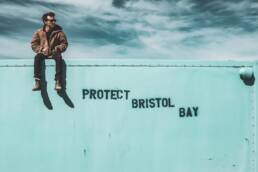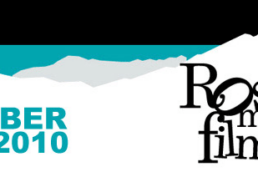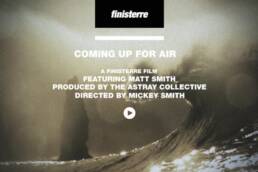An open-pit mine threatens 151 kilometres of salmon-bearing streams in Alaska. Two Saltspring Island filmmakers take the mining company to task and the result is the film Fish First. Story by Mike Graeme.
In Fish First, Salt Spring Island, British Columbia-based directors Alex Harris and Luke Wallace explore what is at stake as North America’s largest gold and copper deposit threatens the world’s largest sockeye-salmon fishery near Bristol Bay, Alaska. Pebble Mine is a proposed open-pit gold and copper mine located at the headwaters of the Bristol Bay watershed, and a scientific study by the state’s own Environmental Protection Agency has claimed construction of the mine’s deposit will destroy 151 kilometres of salmon-bearing streams and 5,350 acres of wetlands and Alaskan wilderness.
Through aerial and point-of-view cinematography, Fish First showcases the beauty of Bristol Bay: ancestral Indigenous village sites, riverside fishing lessons from an Indigenous net-setting expert, and the sights and sounds inside a working smokehouse. The film highlights Indigenous fishing practices and policies that have maintained one of the world’s oldest fisheries for millennia.
Harris brings the film’s implications back to British Columbia, juxtaposing the Alaskan scenes with monologues by Wallace—who is also an accomplished folk singer-songwriter—as he walks through downtown Vancouver, before arriving outside the headquarters of Pebble Mine proponent Northern Dynasty Minerals Ltd. Like a spawning salmon, Fish First explores the beauty of a productive watershed in a long struggle to an inevitable fate should Pebble Mine be approved.
For more information visit cometolife.com/fish-first.
Related Stories
New NFB David Suzuki Film
An inspiring footage highlighting and inspiring film about an inspiring guy. David Suzuki, our most visible…
Parallels – A Short Film
Parallels is a short film produced by Dendrite Studios in April of 2011. Created by: dendritestudios.com
Rossland Film Fest this Weekend
The Rossland Film Fest goes this weekend in, you guessed it, Rossland, where a recent winter storm has buried the…
b4apres Debut Film AZADI: Freedom
Anthony Bonello and his crew at b4apres media have just released the teaser to their new film, AZADI: Freedom. The film…
Beautiful New Film From Finisterre
COMING UP FOR AIR from Finisterre on Vimeo. Fans of surf photographer/cinematographer Mickey Smith's epic Dark Side of…
Sweetgrass Productions Premieres New Film in Nelson
The talented crew from Sweetgrass Productions will be showing their film at Nelson's Capitol Theatre on Wednesday,…






